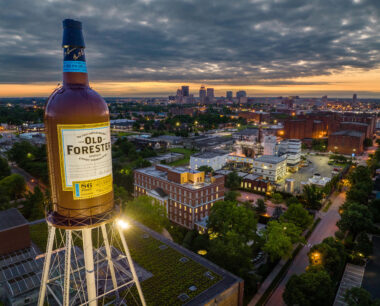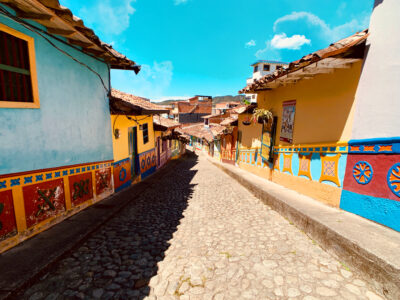
Beyond New York: 16 of the world’s most intriguing street art cities
Forget the big street art capitals. These creative cities and towns have more fascinating tales to tell…
1. George Town, Malaysia
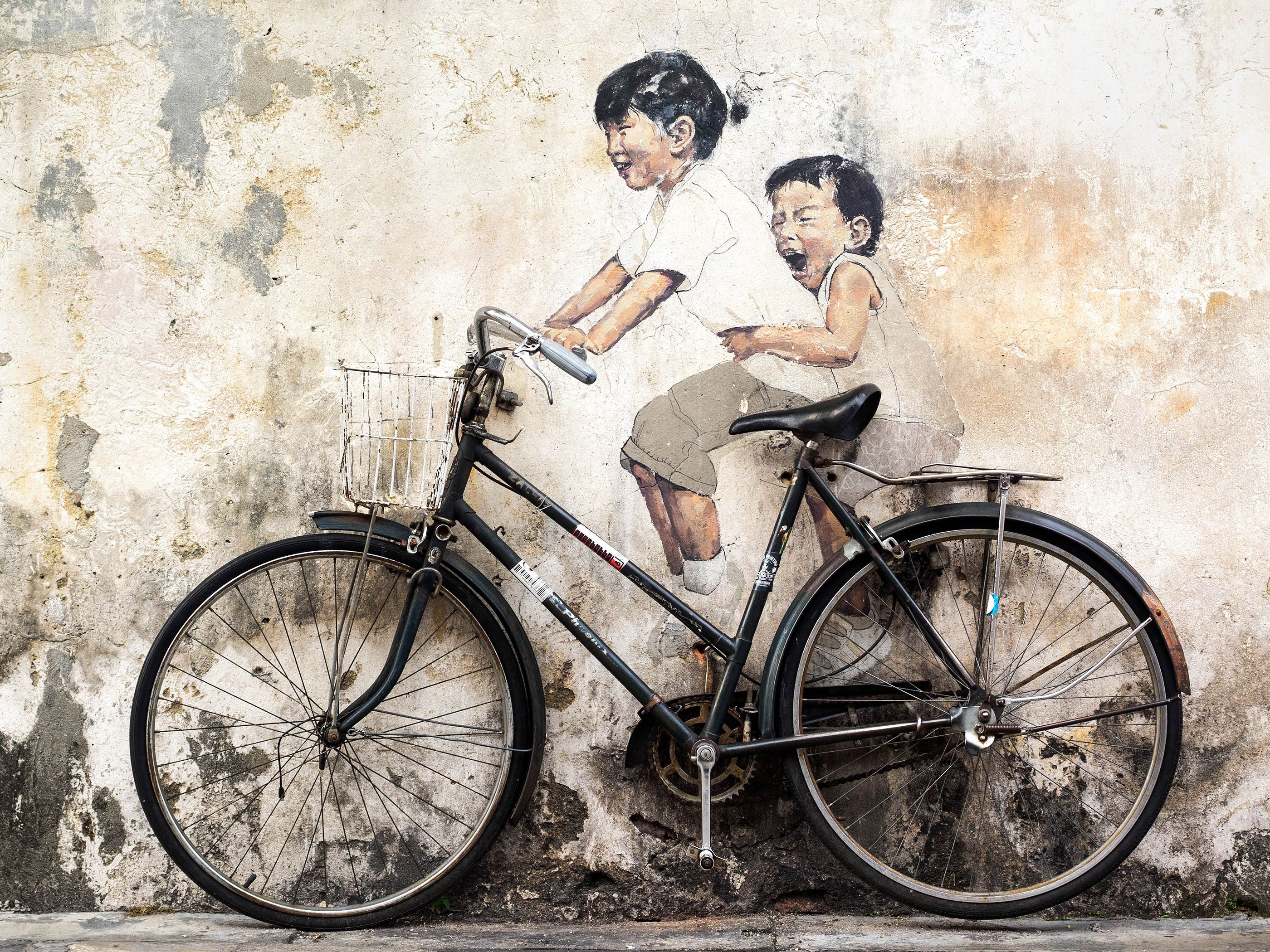
This colonial-era trading town in Malaysia became an unlikely hub for street art in South-East Asia when the local government commissioned Lithuanian artist, Ernest Zacharevic, to do a series of public paintings as part of the 2012 George Town Festival. Using the the public buildings of central George Town as his canvas, and incorporating objects like bicycles, swings and the buildings’ doors and windows, his whimsical works became an instant hit. His most famous work, featuring a boy and a girl riding a bicycle on Lebuh Armenian (Armenian Street) has become the city’s top tourist attraction and the first stop for most visitors.
2. Padua, Italy
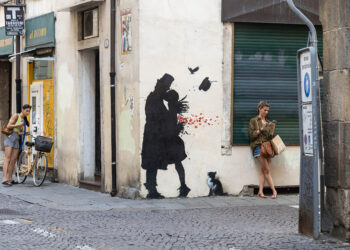
Padua, located just a stone’s throw away from Venice, historically played a pivotal role in the development of fresco painting. But aside from its UNESCO-recognised Giotto masterpiece, the city’s streets are adorned with a different style of mural. The artist Kenny Random is Italy’s answer to Banksy, with his black silhouetted figures dotted across city walls, usually surrounded by bursts of bright colours. He began painting the streets of his hometown in the 1980s, and today, his work is considered an essential part of the urban landscape, with galleries often working alongside the artist to support big projects.
3. Valparaiso, Chile

Regarded by many as the street art capital of the world, the narrow twisting streets of the city, rising up sharply from the port and spreading out over 43 hills, provide the perfect canvas for colourful murals. Valparaiso’s chaotic history provided the inspiration. It’s bohemian population provided the artists. And when street art was legalised after the fall of the Pinochet dictatorship, the city bloomed. For an overview of the city’s celebrated urban art scene, go on a free tour with Valpo Street Art Tours and then simply wander the cerros (hills). There are 42 barrios to explore across the city, most notably the bohemian neighbourhoods of Cerro Alegre and Cerro Concepción.
4. Lodz, Poland

Bleak, grey and depressing, Lodz was just another neglected Polish city, struggling to come to grips with the new world order after the fall of the Berlin Wall. Then, in 2009, the Urban Forms Foundation was created, encouraging street art in public places and turning the city into one of the premier street art capitals of the world. Lodz is famous for its giant sized murals, many 10-storeys high, that add a blast of colour to the otherwise washed out city centre. The most famous are by Polish artists, Przemyslaw Blejzyk and Mateusz Gapski (collectively known as Etam), whose work often use themes and characters from Polish folklore.
Read next: 12 captivating art trails and sculpture parks around the world
5. Orgosolo, Sardinia
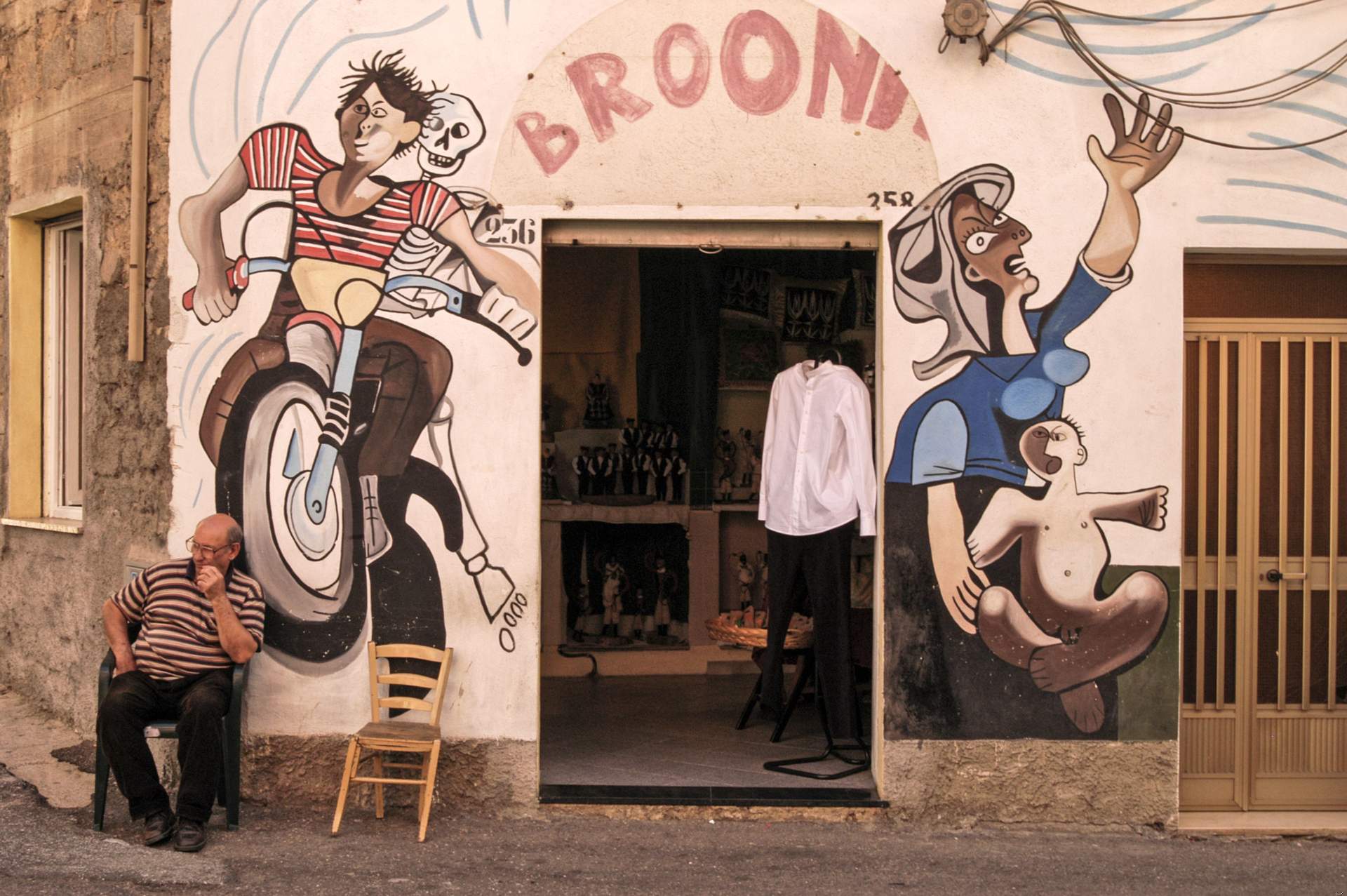
Stubborn and anti-authoritarian, the tiny commune of Orgosolo in the dark mountains of central Sardinia has a long and proud tradition of political street art. The first mural appeared in 1969, celebrating the town’s defeat of an Italian government plan to build a military base nearby. Now, there are over 150. Most are painted in a simple Cubist style, and wandering through the narrow streets of Orgosolo is like walking through a history of revolution throughout the world. You’ll spot murals celebrating uprisings in Vietnam, Cuba and Nicaragua. There’s even one about the famous ‘tank man’ in Tiananmen Square, cleverly incorporating a local stop sign to emphasise his simple act of civil disobedience.
6. Brac, Croatia
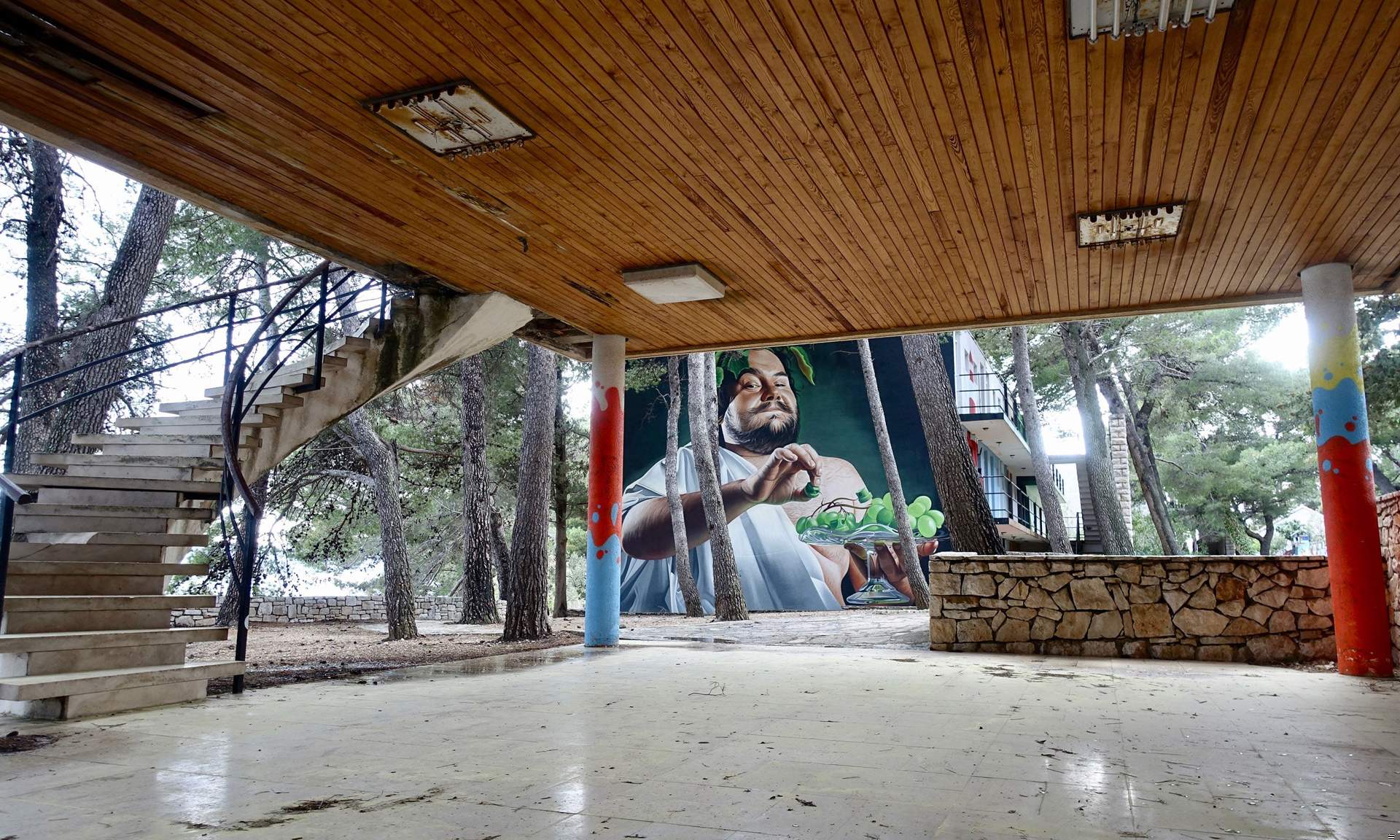
Each summer, the tiny town of Bol, on the Croatian island of Brac, turns over its abandoned buildings to young graffiti artists to show off their skill and network with other artists from across the region. Called Graffiti na Gradele, the festival has been going now for five years. The two main sites are the Fabrika, an ex fish factory, and Bijela Kuća (aka The White House), an abandoned hotel. Silent for much of the year, the two buildings become a buzzing meeting place for the youth of these tiny islands and a hive of art and music. The resulting murals quickly become tourist attractions – at least until the next festival.
7. Montreal, Canada
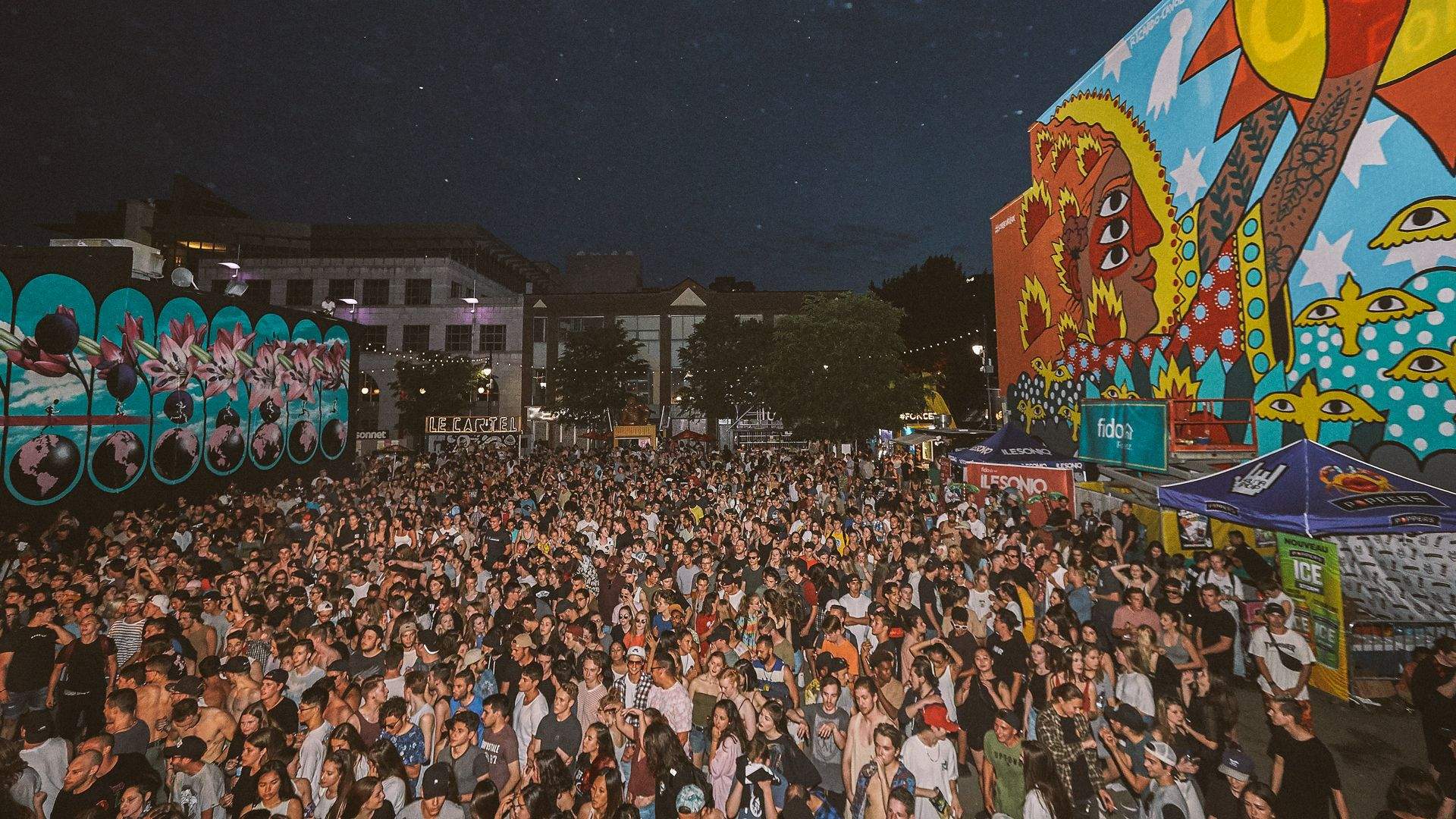
On a continent that isn’t exactly short of street art hot spots, Montreal has emerged as North America’s most exciting and influential street art capital. Saint-Laurent Boulevard, one of Montreal’s busiest street, is literally an outdoor gallery, with lots of great work in Mount-Royal Avenue, Rosemont and the South West Borough, too. It helps that the local government has been actively promoting street art since 1961, devoting 1% of its annual budget to the arts. But what has really put Montreal on the street art map is the annual Mural Festival, a giant, 10-day celebration of urban art every June. Saint-Laurent Boulevard is transformed into an open air studio where local and international artists combine their talents to create compelling works. Featuring more than 80 artists from around the world, it is the biggest street art festival in North America.
8. Derry~Londonderry, Northern Ireland
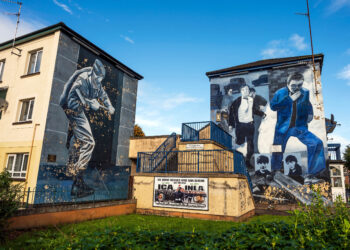
The street art in Bogside, the suburb of Derry~Londonderry that sits below the city walls, are regarded as the most famous political murals in Europe. They reflect the city’s past and present political and religious divisions, pay homage to political leaders and martyrs from both at home and abroad, and act as a reminder of the troubles that afflicted this area not so long ago. The best way to learn the meanings behind each mural is by taking a guided tour: local guides can add insight into the stories behind each artwork.
9. Ljubljana, Slovenia
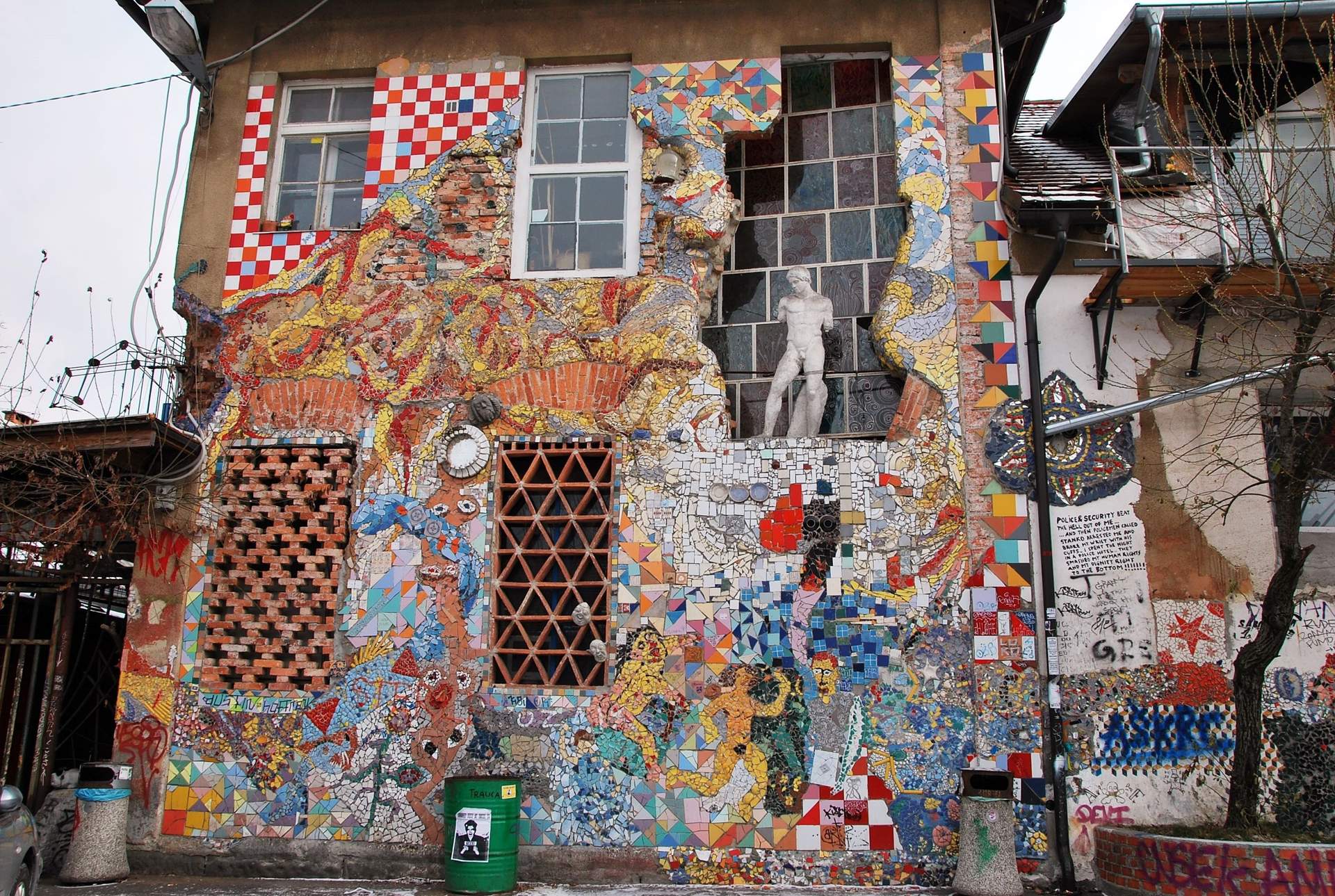
When the military barracks in Metelkova were abandoned after the break up of Yugoslavia in the 1990s, artists and activists moved in, creating an alternative community and transforming the bleak buildings into gloriously shambolic works of art. Despite initial resistance from the local authorities – they were squatters, after all – they have been allowed to stay and a blind eye has been turned to their not-strictly-legal activities. The result? A lively and colourful concentration of street art, bootleg bars and clubs and unlicensed meeting places, just outside the centre of Ljubljana.
10. Stavanger, Norway
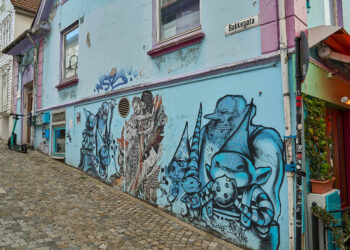
Every year, the residents of Stavanger turn over the walls of their homes and business to street artists as part of the city’s NuArt Festival. It takes quite a leap of faith. They have no say in what the artists produce. And they have to agree to leave the artwork in place for at least a year. The success of the festival suggests that there have been very few complaints. It helps that most of the art reflects local issues and encourages debate on matters that may have been otherwise swept under the carpet. One year, for example, the Scandic Stavanger City hotel was painted with a mural of a dissected whale spurting oil and blood.
11. Istanbul, Turkey
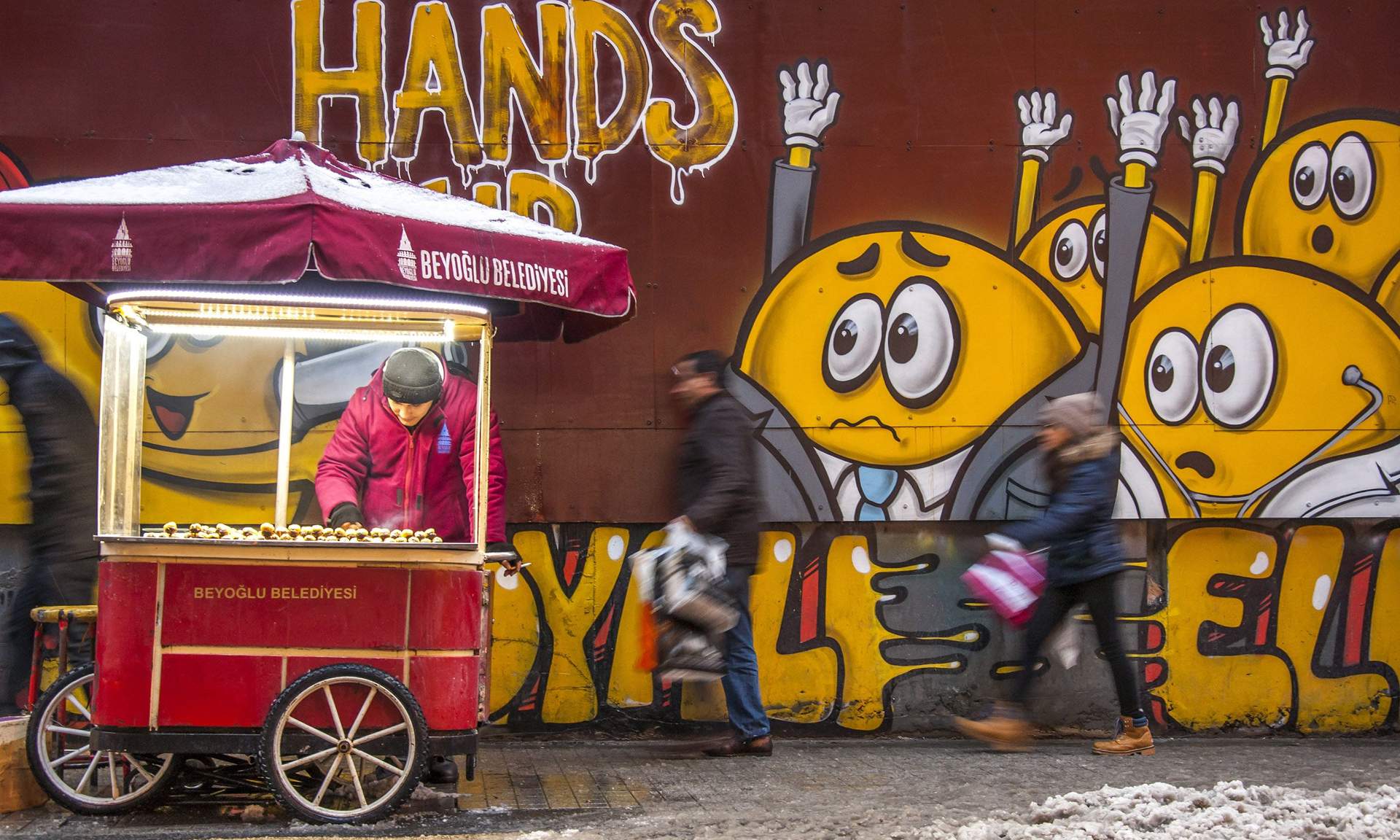
In a country where political dissidence can have serious repercussions, street art offers a rare opportunity to comment and protest. As a consequence, street art has boomed in Istanbul over the past couple of years, with provocative works appearing in progressive suburbs like Kadikoy, on the Asian side of the city. One of the city’s most famous artists goes under the moniker No More Lies, an indication of the motivations behind this burgeoning scene. The annual Mural Istanbul festival has helped too, allowing local and international artists to apply their work onto the sides of buildings across the city. For street art fans, Istanbul is certainly a city to watch.
12. Bogotá, Colombia
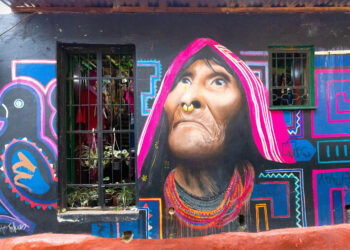
Bogotá is rapidly becoming known as one of the most street-art friendly cities in South America. Following a tragic event of police brutality in 2012, locals united against the violence and urged the Colombian government to protect its street artists. This marked a major turning point for its new reputation, with street art culture and projects now supported by the city. From colourful paintings in historic La Candelaria, to large murals that reach up to several storeys high in downtown Bogotá, the city has transformed into an open-air gallery, with works ranging from political messages to individual artistic expression.
13. Kaunas, Lithuania
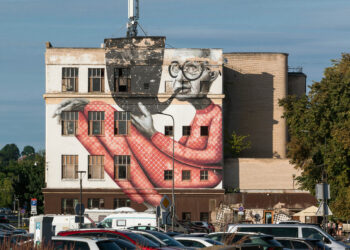
Kaunas, a 2022 European Capital of Culture, is fabled for its street art scene. Born out of rebellious nature, street art has now shifted from being acts of vandalism to treasured canvases and an important part of Kanuas’ cultural landscape. Visitors can take guided tours of the murals, but some of its unmissable works include the Old Wise Man, a 440 sqm figure painted on the side of a former shoe factory and dedicated to the Kaunas-born father of Fluxus, George Maciunas. The Pink Elephant is also iconic: the artwork was inspired by two names spray-painted on the same wall that were associated with love – and so, a giant pink elephant was painted to represent this of course!
14. Kingston, Jamaica
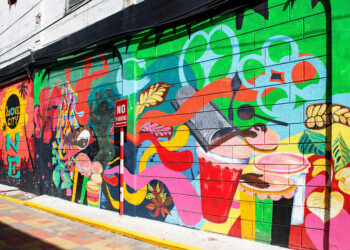
What was a city of concrete walls has transformed into a kaleidoscope of colour. Kingston in Jamaica has been a designated UNESCO Creative City since 2015, predominantly for its musical heritage – however, its visual creativity is now being recognised too. Both music and art combine in the Kingston’s up-and-coming Downtown, now known as the city’s art district. The area’s regeneration is being helped by a range of music-focussed murals painted by local artists along the streets surrounding Water Lane. Walking art tours with Kingston Creative are highly advised to learn the deeper meanings behind the works.
15. San Diego, USA
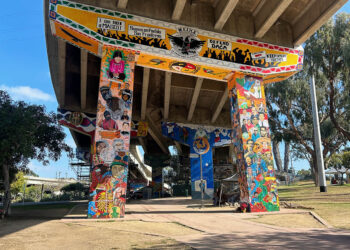
Barrio Logan, the city’s epicentre of Mexican-American culture, is also one of San Diego’s most artistic neighbourhoods. At its heart is Chicano Park Museum and Cultural Centre – a curious park with more concrete than trees. On its construction in the 1960s, the tendrils of Coronado Bridge unfurled right above, thrusting down roots into the park. To claim back their community, locals began painting the bridge’s pillars with street art depicting stories of their struggles and activism. Now it’s an expansive open-air gallery of vibrant murals depicting icons such as Frida Kahlo. Chicano Park is a National Historic Landmark and a sacred space for the community, hosting festivals and events throughout the year.
Read next: Explore Philadelphia’s thriving arts scene
16. Darwin, Australia
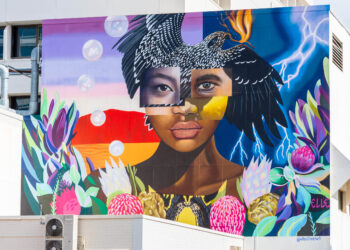
Darwin is one of the best kept secrets of Australian street art, with the Northern Territory city’s walls adorned with enormous murals – many representing the stories and struggles of Indigenous people. Since 2017, it has run an annual street art festival across three weeks in May and June. As well as workshops and events, the festival also welcomes 20 new artistic works to the streets every year. It’s the best time for street-art fans to visit, but guided and self-guided tours are available throughout the year. Use the DSTF app to get started yourself, beginning at Austin Lane where 24 murals brighten up the 370-metre lane. Alternatively, join a 2.5 hour Walk Darwin tour to have a deeper analysis of the works and learn how they the city was inspired by New York’s street art scene.
